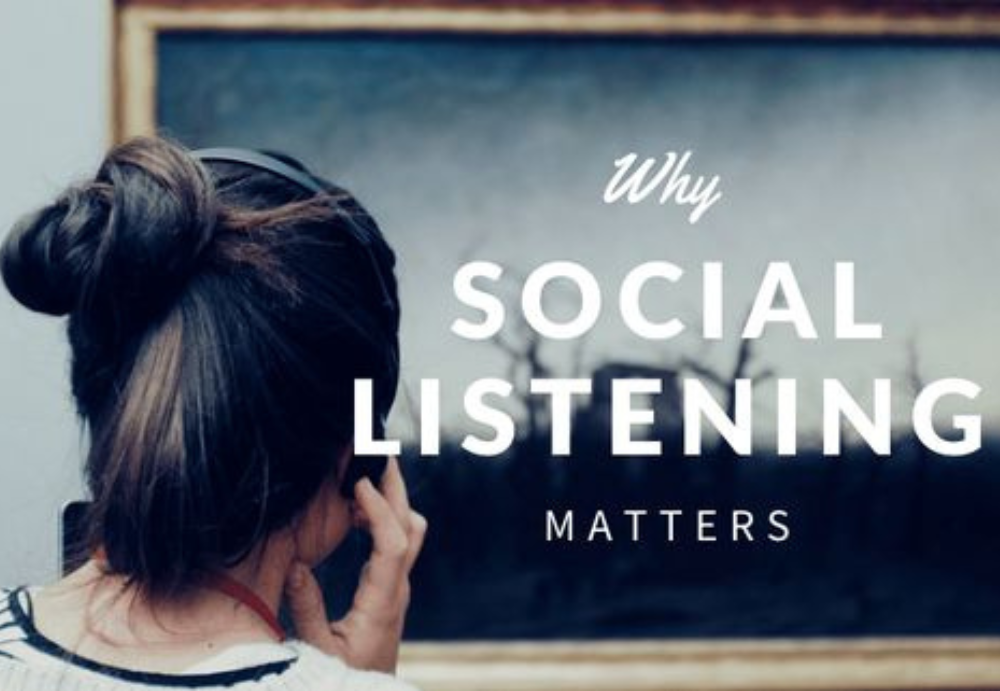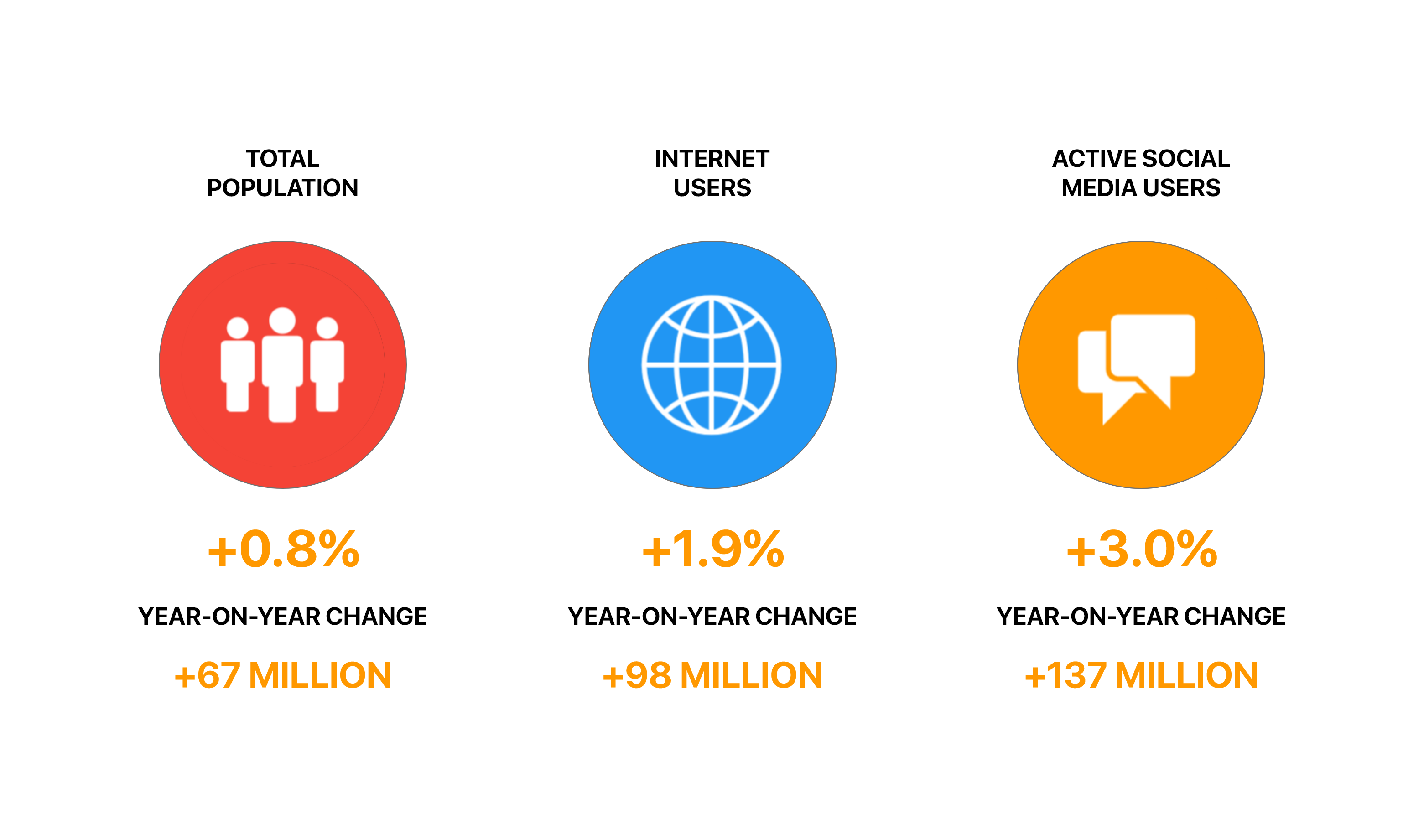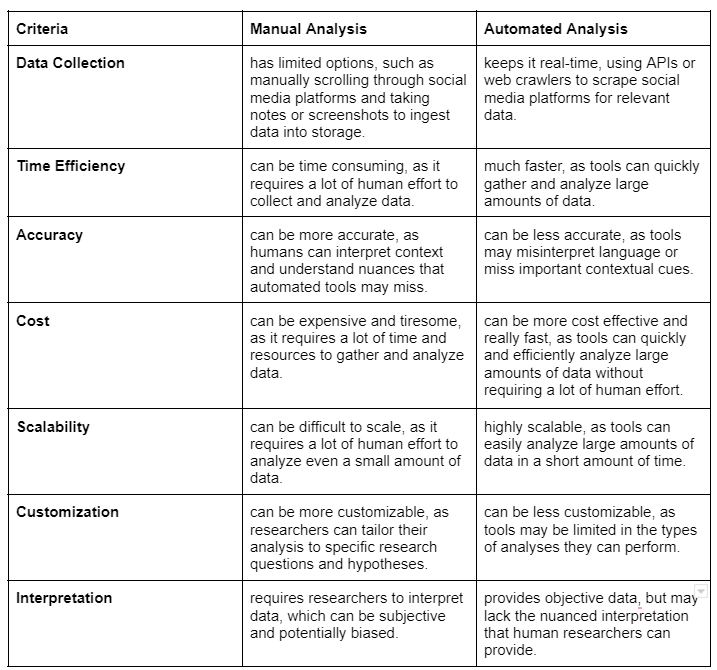
evalmyBRAND | Social Listening Blog Post


Alice and Bob were best friends who owned restaurants across the street from each other. Both of them had active social media pages, but Alice took the time to monitor and listen to her customers’ feedback, while Bob just kept the pages active with regular posts. As time passed, Alice’s restaurant grew and attracted more new customers, while Bob’s remained stagnant.
Alice’s attentive approach to social media allowed her to address customer concerns and tailor her menu to their changing tastes and preferences. Meanwhile, Bob’s lack of attention to his customers’ feedback meant that his menu became outdated and failed to keep up with .In the end, it was clear that listening and engaging with customers on social media had paid off for Alice, while Bob’s passive approach had left him struggling to keep up with his friend’s success.
From the story, we can understand how Alice has grown her restaurant using the power of social media. The world today is a global village and so connected over social. According to Global Digital Report 2023, more than 4.76 billion people are active users of social media. That’s almost 4 out of every 6 people being socially active on the internet. The numbers look very promising, and so are.

In this article, I would like to focus on the power of social media and how advanced technologies like Artificial Intelligence can be used to its maximum extent to enhance the growth of brands and businesses in today’s connected world.
Businesses today focus on reaching more audience and voice of share which helps in their growth. Here are some techniques that businesses use:
By implementing these strategies, businesses can increase their visibility and engagement on social media, reach a wider audience, and ultimately achieve their business goals.
The major challenge is to understand the audience pulse and perform an analysis. The big question is how to perform this analysis – Manual or automated? Let us look at the comparison of manual and automated social media analysis.

Automated social media analysis is time-efficient, cost-effective, and scalable. It also provides quick insights and can analyze vast amounts of data. However, it may be somewhat prone to errors, lack contextual analysis, and require a certain level of human intervention. Manual social media analysis, on the other hand, is highly accurate, but it’s time-consuming, expensive, and limited in terms of scalability and data volume.
That’s exactly what social listening and monitoring tools offer to businesses. There are a number of platforms and companies offering social listening/monitoring tools to brands and businesses and helping them strategize their business decisions and driving them towards successful growth.
Any social listening or monitoring tool must focus on these following aspects of a brand or business’ social presence.
Although there are various social listening tools available, not all of them provide a comprehensive understanding of the customer perspective and offer practical solutions for businesses. evalmyBRAND is an innovative, AI-powered social listening and monitoring platform that not only assesses a brand’s social presence but also identifies key topics and categories using its specialized STAC Engine (an in-house AI model). The platform has gained significant attention and popularity in the media and online, thanks to its unique presence at tech events and its ability to cater to a diverse range of businesses, including B2B, B2C, and even government agencies (referred to as B2G by evalmyBRAND).
According to evalmyBRAND’s team, their product is a one-of-a-kind solution that caters to the specific needs of every business, and it comes at a fair price. The platform offers an easy-to-use subscription model, which costs approximately $200 per month and covers all social media platforms, allowing up to 10 users. Compared to other social listening tools, this is a fantastic deal for brands looking to enhance their online presence.
Social listening tools are designed to monitor and analyze social media platforms for mentions of a particular brand, product, or topic. The architecture of social listening tools generally consists of several components:

Overall, the architecture of social listening tools is designed to provide a comprehensive view of the social media landscape and enable businesses to make data-driven decisions based on the insights generated from social media data.

Amplify Your Product Brand’s Success on Instagram with Social Listening and evalmyBRAND Amplify Your Product Brand’s Success on Instagram with Social Listening and evalmyBRAND Amplify

The Power of Social Listening: Unveiling the Secrets to a Successful Content Strategy Facebook Twitter LinkedIn Crafting an effective content strategy is paramount in today’s

8 Effective Methods for Market Research Using Social Listening Facebook Twitter LinkedIn In the ever-evolving digital world, businesses now have vast access to customer data